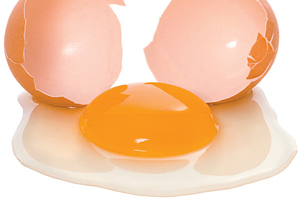Effect of oxycarotenoids diet supplementation on egg yolks

In an experiment at the University Estadual Paulista, Aracatuba, Brazil, the effects of oxycarotenoids supplementation in hens´ diets on yolk composition and stability to rancidity were investigated.
Whenever the market demands for more pigmented egg yolks the oxycarotenoids concentration in layer hens’ feed can be increased. Oxycarotenoids present in Rubrivivax gelatinosus biomass grown in industrial wastewater have already proven their ability on enhancing yolk colour.
However, there is a current interest on the antioxidant properties that some carotenoids may provide to food and health.
Hy-line hens aging 19 weeks, individually received a nutritionally balanced corn basal diet. After 15 days they were assigned to four different treatments, with six replicates, that lasted for 28 days: basal diet (control), basal diet + 1.5 mg/kg canthaxanthin, basal diet + 4.5 g/kg freeze dried R. gelatinosus biomass and basal diet + 4.5 g/kg spray dried R. gelatinosus biomass.
Eggs laid on the last 5 days of rearing were collected. The yolks were separated, analysed for pH and then freeze dried for the further analyses. Proximate composition was determined after drying and the rancidity was investigated at 0, 30 and 60 days of storage at room temperature/dark conditions. Yolks that received the oxycarotenoids had the lowest moisture content and the highest protein contents. Lipids and pH were the same for all treatments. All treatments that received oxycarotenoids had lower TBARS than control group and, among them, oxycarotenoids from spray dried R. gelatinosus biomass were the most effective to prevent rancidity. It is evident that the use of R. gelatinosus biomass in hens feed brings positive effects to the yolk quality, since protein content is increased and conservation is increased due to decreased water content and lipid oxidation.
Source: Abstracts of the International Poultry Scientific Forum, IPPE 2013, Atlanta, GA, USA











